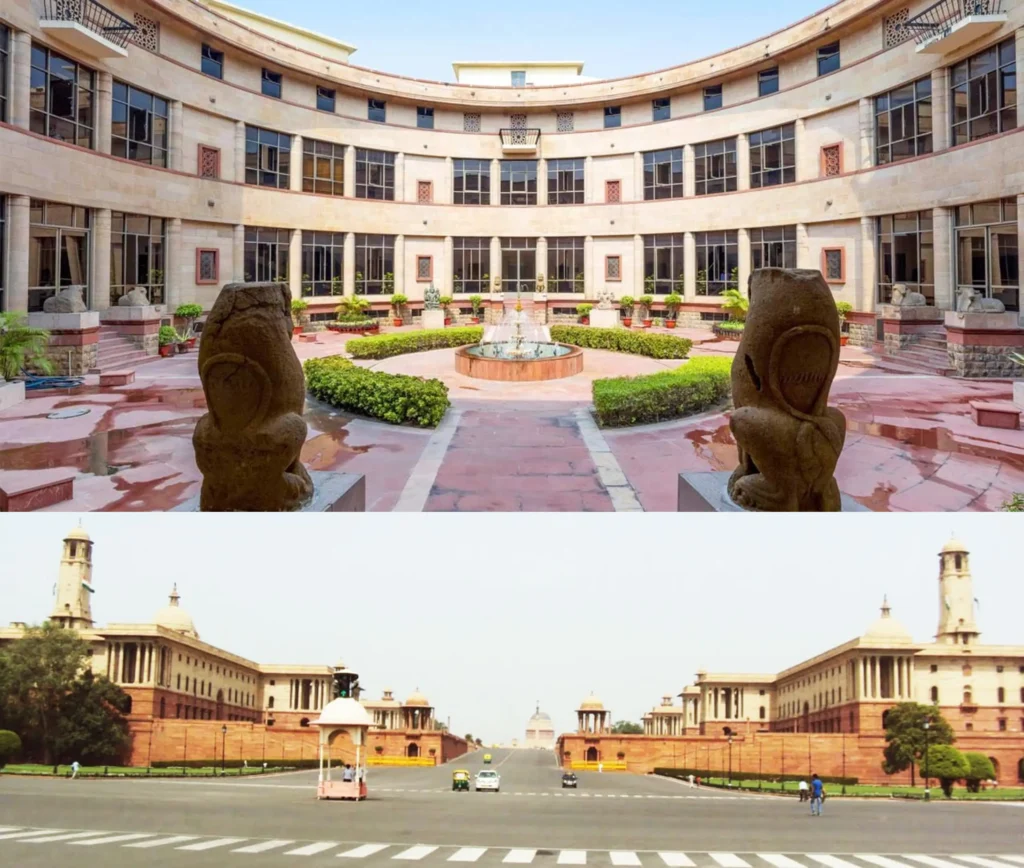New Delhi – The Indian Ministry of Culture has launched a transformative project to create the Yuge Yugeen Bharat Museum, set to become the world’s largest museum at the iconic North and South Blocks on New Delhi’s Raisina Hill. On July 9, 2025, the ministry issued a Request for Proposal (RFP) to appoint a lead consultant for comprehensive architectural design and exhibition planning services. Bids are due by August 1, 2025, with the opening scheduled for August 2, as outlined in official Ministry of Culture documents.

Table of Contents
A Landmark in the Central Vista Redevelopment Project
Spanning 117,000 square meters with 950 rooms, the Yuge Yugeen Bharat Museum will replace the National Museum of India as the nation’s premier cultural institution. This ambitious project, part of the Central Vista redevelopment, involves the adaptive reuse of the historic North and South Blocks, designed by Sir Herbert Baker in the Indo-Saracenic style. These buildings, known for their red sandstone facades and classical symmetry, will be reimagined as a world-class museum celebrating India’s cultural heritage.
The museum is expected to attract 10 million visitors annually, offering immersive galleries, educational centers, and interactive spaces. On December 19, 2024, an agreement was signed between the National Museum and France Museums Development for technical cooperation, ensuring global expertise in the project’s development.
Also Read: Adi ShaPaTH: MoTA Unites Stakeholders for Tribal Development
Key Architectural Features
The appointed consultant, backed by a multi-disciplinary team specializing in heritage adaptive reuse, exhibition design, and structural engineering, will craft a design that integrates Indian aesthetics, sustainable practices, and minimal intervention to preserve the buildings’ original character. Key architectural considerations include:
- Heritage Preservation: The Heritage Conservation Committee (HCC) approved the project on October 24, 2024, mandating the retention of the buildings’ red sandstone and cream-colored accents, prohibiting external modifications like heat-resistant coatings.
- Adaptive Reuse: Internal partitions, added over decades for office use, will be removed to create open, museum-ready spaces while reinforcing structural integrity.
- Sustainable Design: Energy-efficient systems, climate-controlled galleries, and advanced lighting will align with global museum standards.
- Accessibility and Technology: The design will incorporate accessibility features and immersive technologies like augmented reality to enhance visitor engagement.
“Time and Timelessness” Gallery: A Cultural Highlight
A centerpiece of the museum, the “Time and Timelessness” gallery, will explore India’s unique relationship with time through artefacts spanning centuries. Notable items include:
- Scientific Instruments: Sundials, astrolabes, and water clocks.
- Textual Treasures: Palm-leaf Pañcāṅgas, Āryabhaṭīya excerpts, and cosmological diagrams.
- Artistic Works: Natarāja bronzes, Surya sculptures, and mythic time cycle depictions.
- Historical Artefacts: Indus Valley Terracotta Hourglass (c. 2500–1750 BCE), Konark Sun Wheel (c. 13th Century CE), Maurya Edict Pillar Fragment (c. 3rd Century BCE), and Gupta-Period Surya Sculpture (c. 5th Century CE).
This gallery will blend scientific precision with philosophical narratives, showcasing India’s contributions to astronomy, mathematics, and metaphysics.
Also Read: Delhi-Gurgaon in 30 Minutes: Nitin Gadkari Unveils Ambitious Plan to Tackle Capital’s Traffic Woes
Phased Restoration and Heritage Conservation
Managed by the Central Public Works Department (CPWD) under the Ministry of Housing and Urban Affairs (MoHUA), the restoration of the North and South Blocks will occur in phases. The North Block, currently housing ministries like Home and Finance, will be vacated systematically for retrofitting. The HCC’s strict guidelines ensure the preservation of the buildings’ architectural authenticity, maintaining their Indo-Saracenic heritage.
Curating a National Narrative
The National Museum’s Content Committee is curating artefacts from across India to align with the museum’s themes of cultural continuity and civilizational progress. In July 2024, Union Culture Minister Gajendra Singh Shekhawat informed Parliament that no final decision has been made regarding the existing National Museum building, indicating ongoing deliberations.
Also Read: Delhi Government Launches ₹50,000/Month Tourism and Heritage Fellowship to Empower Youth
A Global Cultural Landmark
The Yuge Yugeen Bharat Museum aims to position India as a global leader in cultural heritage and museum architecture. By harmonizing heritage preservation with modern design innovation, the project celebrates the evolution of Bharat and its enduring global influence.
For more details, visit Ministry of Culture or Central Vista Project.
Sources: Ministry of Culture RFP Document, MoHUA Project Updates, CPWD Guidelines, Parliamentary Records.
